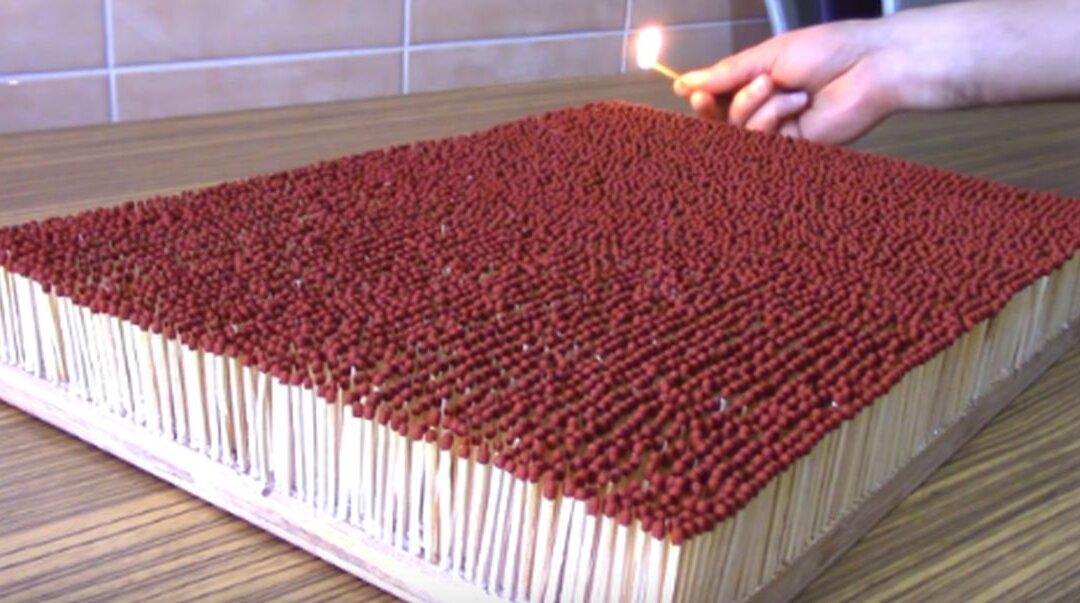A video showing 6,000 matches igniting each other in a chain reaction has attracted lots of attention online.
The fire starts with a single flame, but slowly builds up until it is quite large.


A video showing 6,000 matches igniting each other in a chain reaction has attracted lots of attention online.
The fire starts with a single flame, but slowly builds up until it is quite large.